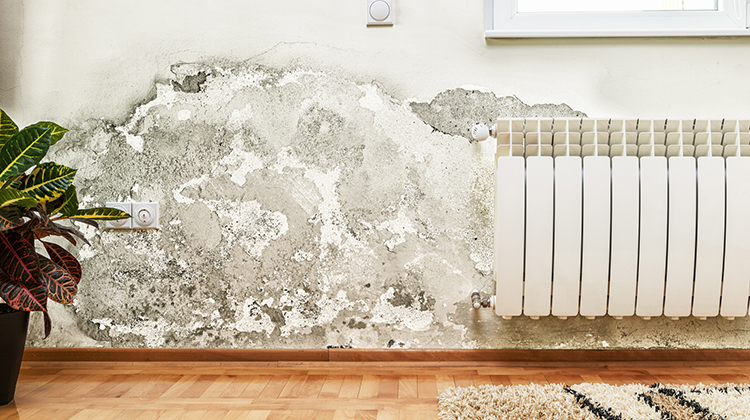Mold is a problem in any home. Excess moisture, especially this time of year, can increase the risk of mold growth in basements, closets, and other locations. While most people focus on its appearance and smell, exposure to high mold levels can cause allergic reactions and respiratory problems. Symptoms of mold issues include sneezing, stuffy nose, cough, and itchy eyes.
Why It’s a Problem
Mold spores spread easily and cannot be completely eradicated. Mold can grow anywhere: on carpet, clothing, food, paper, and even in places you can’t see, such as the backside of drywall, areas inside walls around leaking or condensing pipes, and above ceiling tiles. Not only is a mold problem difficult and costly to fix, but mold can also produce allergens and irritants (and, rarely, toxins) that may compromise your health. So what can you do if you’re concerned about mold growing in your home? The best approach is to prevent mold before it becomes a problem. The key to mold prevention is simple: moisture control. Here are several ways to curb moisture indoors, and the mold that thrives on it.
4 Tips to Prevent & Stop Mold From Spreading
1-Manage your humidity levels
Mould needs moisture to grow and mainly forms when cool air meets warm air. By maintaining healthy humidity levels you can help ensure that mold finds it hard to form and spread. Too high humidity can create mold growth, but too low has been linked to itchiness and dry skin, as well as the spread of the flu virus1. Recommended humidity levels vary, but between 30-60% we consider healthy. The key to good humidity levels is maintaining a balance.
2- Identify IF Mold is Growing
To correct a mold problem, you first must identify if and where the moisture problem is. A visual inspection is the first recommended course of action before spending any money on mold testing. If you have visible mold present, testing would likely not be needed to create a plan of action. A thorough visual inspection should help you identify what is going on in your home or business regarding water and drainage, air flow in the building, and the general state of any appliance or equipment that could be or become a potential mold problem.
3- KEEP RAIN GUTTERS CLEAN
While the landscape should divert water away from your home, so too should your gutters. However, they can’t do their job when they’re in a state of disrepair. Foliage and detritus gather in rain gutters over time. This can cause spillover during a downpour. Instead of traveling through the downspout, water will run down your home’s siding. Needless to say, the water can infiltrate your home. Worst of all, this water buildup and mold growth will likely occur in the attic or behind the walls. Prevent this by keeping your gutters clean.
4- REPAIR LEAKS
It’s a good idea to keep tabs on your home’s plumbing. Even small leaks will eventually lead to a serious mold problem. Once or twice a month, you should check all the open pipes in your home since leaks are one of the main causes of mold in homes. Investigate the pipes under the sinks, behind the toilet, and running through the basement. If left unchecked, you could have a serious health hazard on your hands by the time you discover the leak.




